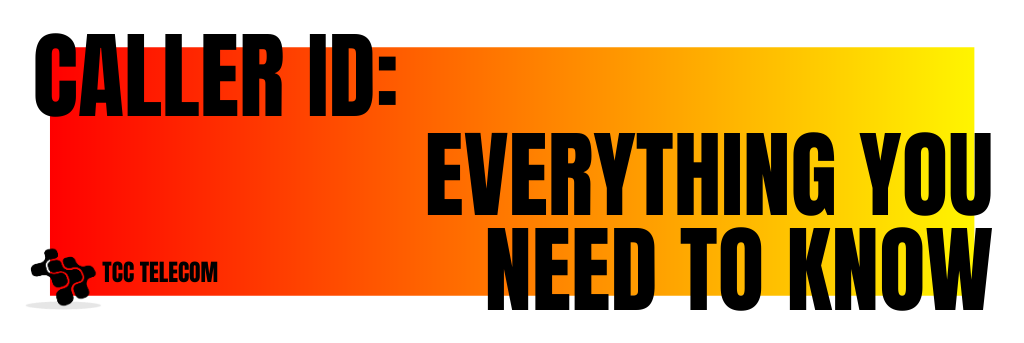

Who’s calling? For most of us, a simple glance at our telephone will answer that question. In fact, Caller ID is a service that is largely taken for granted, but can be vital for our businesses. It helps us decide if we should answer that call going through, and it lets our clients and customers know that we’re calling.
Here’s a rundown of Caller ID facts you should know.
Caller ID has 2 Parts
Caller ID is made up of two components – a phone number and a name.
Technically, the phone number is your Caller ID. This information is out pulsed, or sent, by your carrier as the originator of the call.
The name associated with your telephone number is called the CNAM (Caller Name). The carrier of the receiving party does a “dip” into a database to match a name with the phone number they are receiving. Then, that name and number show up on your phone screen.
CNAM is Unregulated
Back when Caller ID was first developed, analog lines, or POTS (Plain Old Telephone Service) lines were predominately used. Everything was connected at the central office and there was a relatively small number of phone carriers. This made Caller ID easy to regulate and standardize.
With the advent of SIP trunking, wireless carrier, VoIP phone systems, and the emergence of small carrier and mergers, caller ID is no longer simple. There are multiple CNAM databases, sometimes called ‘Line Information Databases,’ out there. Different carriers subscribe to different databases, and they are not updated on any type of schedule. While one database may update every 30 days, another may update every 60.
If you are worried that your Caller ID name is showing up incorrectly, reach out to your carrier to verify and change if necessary.
It Can be Faked
You’ve probably already experienced this – you get a call that looks like it’s coming from a local number that you don’t know, or with a name from a government agency. But, when you answer it’s a recorded script or person trying to get your personal information.
Caller ID can be faked, or what is known as spoofed. Spoofing can be illegal, under the ‘Truth in Caller ID Act.’ This FCC rule says it is illegal to transmit misleading/inaccurate caller ID information with the intent to defraud. Fines can be as high as $10,000 for each violation.
Spoofing isn’t always illegal, though. A legitimate use of spoofing is when a doctor calls a patient from their cell phone, but the caller ID shows the practice number instead. This type of spoofing does not have the intent to defraud of cause harm.
You can learn more about spoofing on the FCC’s website.
Caller ID is a great tool and should be used, even though it does have some downfalls. However, I advise every business to make sure they are utilizing the feature. For incoming calls, Caller ID is a standard feature on Star2Star phone systems and PBX systems utilizing digital lines like PRIs or SIP trunks. If you are using analog lines this may be a feature that you have to pay extra for but is well worth it. Outgoing Caller ID is always included.
If you have questions about your Caller ID – let us know! You can email us at info@tcctelecom.com, call us at 443-201-8074, or use our Contact Us page.
